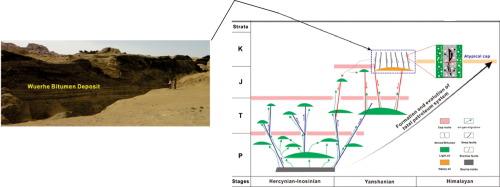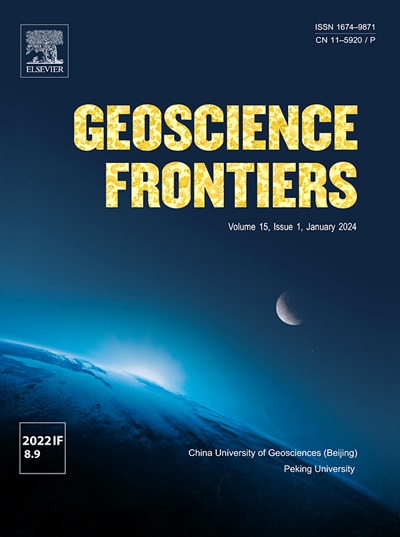Yanshanian–Himalayan geodynamic transformation of the northwestern Junggar Basin, southwestern Central Asian Orogenic Belt (CAOB), and its significance for petroleum accumulation
Abstract
The northwestern Junggar Basin in the southwestern Central Asian Orogenic Belt is a typical petroliferous basin. The widely distributed reservoirs in Jurassic–Cretaceous strata indicate that the region records Yanshanian–Himalayan tectonic activity, which affected the accumulation and distribution of petroleum. The mechanism of this effect, however, has not been fully explored. To fill the knowledge gap, we studied the structural geology and geochemistry of the well-exposed Wuerhe bitumen deposit. Our results indicate that deformation and hydrocarbon accumulation in the northwestern Junggar Basin during the Yanshanian–Himalayan geodynamic transformation involved two main stages. During the Yanshanian orogeny, a high-angle extensional fault system formed in Jurassic–Cretaceous strata at intermediate to shallow depths owing to dextral shear deformation in the orogenic belt. This fault system connected at depth with the Permian–Triassic oil–gas system, resulting in oil ascending to form fault-controlled reservoirs (e.g., a veined bitumen deposit). During the Himalayan orogeny, this fault system was deactivated owing to sinistral shear caused by far-field stress related to uplift of the Tibetan Plateau. This and the reservoir densification caused by cementation formed favorable hydrocarbon preservation and accumulation conditions. Therefore, the secondary oil reservoirs that formed during the Yanshanian–Himalayan tectonic transformation and the primary oil reservoirs that formed during Hercynian–Indosinian orogenies form a total and complex petroleum system comprising conventional and unconventional petroleum reservoirs. This might be a common feature of oil–gas accumulation in the Central Asian Orogenic Belt and highlights the potential for petroleum exploration at intermediate–shallow depths.


 求助内容:
求助内容: 应助结果提醒方式:
应助结果提醒方式:


